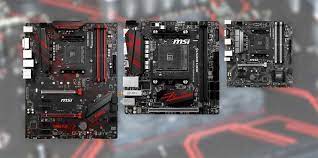Back then, the micro-ATX motherboard was the smallest format available for desktops, but component miniaturization and the development of technology have led to their rise to the background due to new motherboards basic ITX mini, or simply ITX.
In this article we will see the ATX Vs Micro ATX Vs ITX boards, if you are thinking of buying one of them; we hope we will clear your doubts here.
Motherboard Sizes:-
Currently there are basically three sizes of motherboard, and two of them are the ones that interest us. How many little ones will compare them to the big ones?
ATX boards, standard size: These are the most generic, measuring 305 x 244 mm. Almost 90% of the chassis sold in the market are compatible with this type of board. They include 4 DIMM slots and space for at least two graphics cards.
Micro ATX boards: They are on the next list in terms of size, with a total of 284 x 208 mm for the mini ATX version and 244 by 244 mm for the micro ATX. These boards are compatible with almost all existing chassis on the market that support ATX, so we have the advantage of getting a lot of space for them.
ITX or Mini-ITX boards: They are the smallest for desktops, and save the distances with the help of boards that combine the considered Mini-PCs, with customization of these for your hardware and processor. These boards usually fit many of the chassis mentioned above, although it clearly does not make much sense to assemble it on this large chassis.
RAM support:-
In a short time the RAM capacity reached a new level as the manufacturers are already building 32GB DDR4 modules at amazing speeds. Physically, the micro-ATX has an undeniable window, like the ATX, has almost all 4 DIMM slots capable of holding 64 GB of DDR4 RAM, although with the 32 GB modules it will soon be 128GB.
For its part, the Mini-ITX board will in all cases include only two DIMMs, which in its case will be able to support 32 or 64 GB of RAM. So in that sense, Micro ATX gives extra capability. As for the speed, in both cases it will depend on the strength of the board and the JEDEC profiles that the manufacturer has decided to support using the BIOS. Then we will have ITX boards as well as Micro ATX with support for over 4000MHz.
Storage M.2 SSD:-
We will start with an advanced ITX board; in its specification we see a total of two M.2 slots compatible with both SATA and PCIe. These panels usually do not have enough front space for the two slots, so the manufacturers put the other slot right behind. We will have a total of 4 SATA connectors in almost all boards of this type.
The Micro ATX boards have enough space to place 6 SATA ports next to 2 M.2 slots. Thus, in theory, the storage capacity can be expanded in the micro ATX a little more, but it will depend on the manufacturer, and we know that with two M.2 slots we will have too much.
